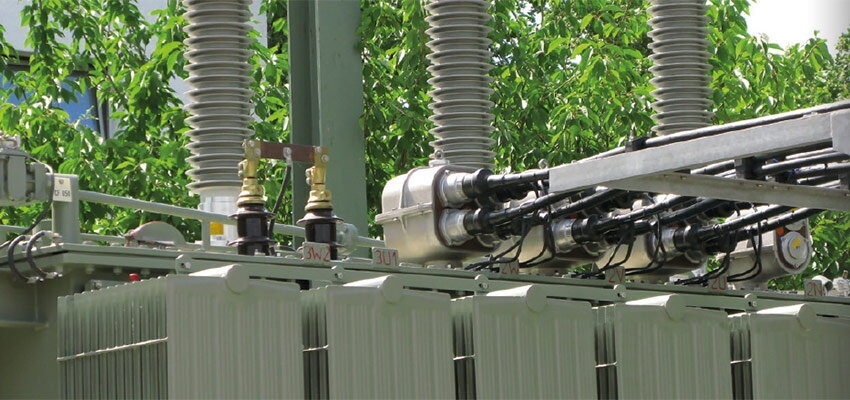
Pluggable bushings: More flexibility for existing and new grid facilities
Abstract Pluggable bushings offer numerous advantages over conventional bushings, but with the same performance characteristics: simple and much faster to install, they do not require...
byCarmen MERTENS, Thomas FRIEDEL, Markus SULZBERGER

Abstract
Pluggable bushings offer numerous advantages over conventional bushings, but with the same performance characteristics: simple and much faster to install, they do not require any oil or gas work on site in the substation; they are solid-insulated, explosion-proof, and can be replaced and used over again at any time. Plus they are significantly shorter, requiring considerably less space inside a transformer. Of course, the same is true for use in gas-insulated switchgear (GIS). Demand for pluggable bushings, which were developed around twenty years ago mainly for testing and measurement purposes, has been steadily growing in recent years – together with their scope of applications. Given the changing grid structure and rising challenges associated with the energy transition, grid operators worldwide recognise the advantages of pluggable bushings in terms of greater planning flexibility and the future flexible use of transformers.
Keywords: pluggable bushings, flexible transformers, future-proof grid structure
1. Introduction
In the years ahead, increasing decentralisation of power generation will require continuous adjustments to the grid structure. Transformers need to be quick to install, interchangeable, and permit a variety of uses in the long term. Meanwhile, increasing urbanisation is placing increasing demands on existing substations. Within space constraints and with interruptions kept to a minimum, they need to be modified for higher capacities. Connection components such as bushings play a key role. For example, pluggable bushings enable rapid installation of equipment for temporarily bypassing a transformer, or for its permanent operation – both for new installations and for modifications to gas-insulated or conventional switchgear. What is more, the ability to simply replace the pluggable components increases the reliability of the overall system. The outage times during maintenance or during midlife refurbishment are reduced significantly, meaning that the redundancy within the substation is restored in less time. With the standard design, the midlife refurbishment requires a substantial amount of work. The oil-filled transformer is disconnected from the grid, the oil level lowered, the bushing replaced and subsequently the entire connection technology reconnected. It may sometimes be necessary afterwards to draw a new vacuum under oil. This leads to a three-day downtime to allow any air bubbles formed during the procedure to escape. The procedure is much simpler and, as such, much cheaper with a transformer equipped with a universally pluggable interface. After switching off, the old bushing is simply unplugged and the new one plugged in. This only takes 1.5 hours to complete, after which the grid operator can restore the redundancy within the substation. For the Total Cost of Ownership (TCO) calculation, this means minimal costs for personnel and system downtime.
Apart from easy installation when building new facilities, during replacement, and for flexible reconfiguration of stationary systems, pluggable bushings are also advantageous in temporary applications. Thanks to their solid insulation, there is absolutely no environmental risk when temporarily replacing overhead power lines with cables. Moreover, they simplify and speed up the construction of temporary systems.







